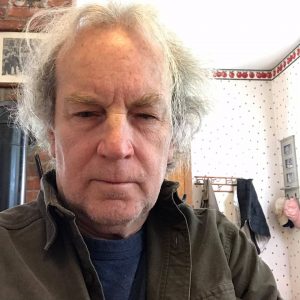If there is a Bible in the world of traffic engineers, it is the Institute of Transportation Engineers (ITE) Manual, which is currently in its Seventh edition. This manual is cited in most zoning cases involving big box stores, and developers play games when using this manual, knowing that most Planning & Zoning Board members are not familiar with its contents or methodology. Because traffic is a major issue in most site fights, community groups often have to hire their own traffic engineers to do a “peer review” of whatever numbers the developer produces. One frequent game developers play is to use an inappropriate “land use code” to describe a Wal-Mart superstore. A developer may call their project a “shopping center,” which is land use code 820, or they may use code 813, which is a free-standing discount superstore, land use code 813. But this latter code is based on a supercenter averaging 161,000 s.f. Both the shopping center code and the 813 supercenter code substantially underestimate the actual car trips that the largest superstores now being proposed will produce. To verify this concern, researchers from the ITE studied 5 superstores in Oklahoma and Texas, with an average footprint of 213,210 s.f. The ITE engineers placed staff at the driveways of each facility, and studied traffic counts from 4:30 pm to 5:30 pm, which was considered the peak weekday hour for these stores. These counts were used to establish the car trips per 1,000 s.f. during the evening peak hour. These traffic counts were actually done in July and October of 2003, but the results were not published in the ITE Journal newsletter until August of 2006. The ITE staff divided the total amount of car trips in and out of the driveways, and then divided them by the size of the store, expressed in 1,000 square feet. For example, one store had 756 car trips in the driveway, and 708 trips out, for a total of 1,467 car trips in an hour. That total was divided by 204, since the store was 204,000 s.f. The result was 7.l9 trips per thousand square feet. That means the store experienced approximately 733 cars going in and out in one evening hour. The average for all 5 superstores studied was 5.5 peak evening car trips per 1,000 s.f. of store. A typical 213,210 s.f. store studied would generate 1,172 car trips in one hour’s time, or roughly 586 cars. Researchers then compared that to the land use code 813 for a free standing discount store averaging 161,000 s.f., which was 3.87 trips per 1,000 s.f. of store. Using the old formula for a ‘smaller’ superstore when analyzing a store larger than 200,000 s.f. would dramatically understate the true traffic count. “Today’s free-standing discount superstore with sizes greater than 200,000 s.f. have significantly higher trip generation rates that the stores used to supply data for the ITE land use code 813,” the ITE Journal concludes. This study suggests that traffic engineers should use the new, higher trip rates produced in this report when presenting data for superstores like Wal-Marts in excess of 200,000 s.f. The researchers also suggested that the ITE should add a new land use code for “large free-standing discount superstores greater than 200,000 s.f.” The rate for a ‘shopping center’ is definitely not correct for these new, larger supercenters. A superstore at 200,000 s.f. measured by the “old” land use code 813 for a discount superstore, would be 774 car trips in the evening peak hour, whereas using the new land use code for superstores over 200,000 s.f. would yield 1,100 car trips in the peak evening hour — or 42% higher traffic volume.
Traffic is important to raise in almost every site fight, but traffic engineers working for developers will try to find a way to make it sound like adding thousands of cars to the roadways will improve traffic. They will propose adding turning lanes, putting in traffic signals, and changing the timing sequence on the signals. Citizens will need expert testimony to rebut the developer’s traffic impact study, especially if the citizen’s group plans to take its case to court, where a traffic engineer’s report holds far more credence than any neighbor or other non-expert witness. For local communities fighting a Wal-Mart supercenter 200,000 s.f. or over, the new land use code should be insisted upon. For backup, show your Planning Board a copy of the ITE Journal article from August, 2006, entitled “Trip Generation Characteristics of Free-Standing Discount Superstores.” For a copy of the article, email: [email protected].

